-
 Bitcoin
Bitcoin $116400
-0.36% -
 Ethereum
Ethereum $4033
3.40% -
 XRP
XRP $3.302
-1.26% -
 Tether USDt
Tether USDt $1.000
-0.02% -
 BNB
BNB $796.1
1.67% -
 Solana
Solana $177.8
1.89% -
 USDC
USDC $0.9999
0.00% -
 Dogecoin
Dogecoin $0.2314
4.09% -
 TRON
TRON $0.3381
0.14% -
 Cardano
Cardano $0.7989
1.22% -
 Stellar
Stellar $0.4496
-1.84% -
 Chainlink
Chainlink $20.42
9.42% -
 Hyperliquid
Hyperliquid $41.17
0.88% -
 Sui
Sui $3.914
3.77% -
 Bitcoin Cash
Bitcoin Cash $584.7
1.52% -
 Hedera
Hedera $0.2632
-0.54% -
 Avalanche
Avalanche $24.09
3.40% -
 Ethena USDe
Ethena USDe $1.001
-0.02% -
 Litecoin
Litecoin $123.2
1.33% -
 Toncoin
Toncoin $3.318
-0.04% -
 UNUS SED LEO
UNUS SED LEO $8.984
-0.05% -
 Shiba Inu
Shiba Inu $0.00001323
2.85% -
 Uniswap
Uniswap $10.90
4.41% -
 Polkadot
Polkadot $3.999
3.34% -
 Dai
Dai $1.000
0.01% -
 Cronos
Cronos $0.1630
9.64% -
 Bitget Token
Bitget Token $4.484
0.82% -
 Monero
Monero $272.4
2.44% -
 Pepe
Pepe $0.00001173
6.03% -
 Aave
Aave $290.8
2.88%
How to use OBV with the chip peak? Is the breakthrough of the low-level dense area effective?
OBV and chip peak analysis can enhance crypto trading by identifying trends and key price levels, but always confirm with price action and market context.
Jun 03, 2025 at 02:00 am
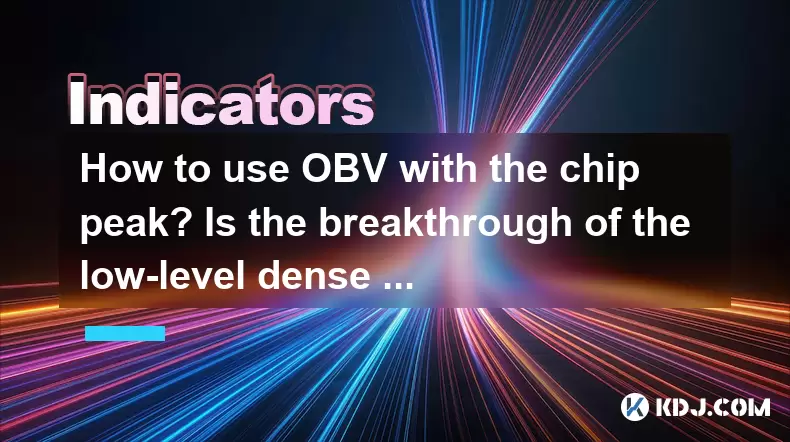
The On-Balance Volume (OBV) indicator and the concept of the "chip peak" are powerful tools within the cryptocurrency trading community for analyzing market trends and making informed trading decisions. In this article, we will explore how to effectively use OBV in conjunction with the chip peak, and delve into the effectiveness of breaking through low-level dense areas.
Understanding OBV and Chip Peak
OBV, or On-Balance Volume, is a technical indicator that uses volume flow to predict changes in stock price. The core principle behind OBV is that volume precedes price movement. If a cryptocurrency closes higher than the previous day, the entire day's volume is considered "up-volume." Conversely, if it closes lower, the volume is considered "down-volume." The OBV line is a cumulative total of this volume, increasing with up-volume and decreasing with down-volume.
The chip peak, on the other hand, is a concept borrowed from the stock market and adapted for cryptocurrency trading. It refers to the concentration of "chips" or shares at certain price levels. A chip peak indicates where the majority of the trading volume has occurred, often signaling potential support or resistance levels. In the context of cryptocurrency, this can be visualized using volume profile charts.
Combining OBV with Chip Peak Analysis
To effectively use OBV with the chip peak, traders need to understand how these two indicators can complement each other. The OBV can provide insights into the strength of a trend, while the chip peak can highlight significant price levels where large volumes of trades have taken place.
Identify the Chip Peak: Start by analyzing the volume profile of the cryptocurrency you are interested in. Look for areas where the volume is significantly higher, indicating a chip peak. These areas are often where large numbers of traders have bought or sold, creating potential support or resistance levels.
Monitor OBV Trends: While observing the chip peak, keep an eye on the OBV line. An increasing OBV suggests bullish momentum, while a decreasing OBV indicates bearish momentum. If the OBV is trending upwards and approaches or surpasses a chip peak, it could signal a strong bullish trend.
Confirm with Price Action: Always confirm the signals from OBV and chip peak with actual price action. If the price breaks through a chip peak with a corresponding rise in OBV, it can be a strong bullish signal. Conversely, if the price fails to break through a chip peak and the OBV is declining, it might indicate a bearish trend.
Breakthrough of Low-Level Dense Areas
The effectiveness of breaking through low-level dense areas is a critical aspect of using the chip peak for trading. A low-level dense area refers to a price range where a significant volume of chips (trades) has accumulated, typically at lower price levels.
Identify Low-Level Dense Areas: Use a volume profile chart to identify these areas. They are characterized by high trading volumes at lower price levels, suggesting a strong support zone.
Watch for Breakthroughs: A breakthrough of a low-level dense area can be significant. If the price successfully moves above this area, and the OBV confirms the upward trend, it can be a strong bullish signal. This indicates that the market has overcome a major support level and may continue to rise.
Analyze OBV Confirmation: For the breakthrough to be considered effective, the OBV should also show a corresponding increase. A rising OBV alongside the price breakthrough suggests that the volume is supporting the price movement, making the signal more reliable.
Practical Example of Using OBV and Chip Peak
Let's consider a practical example to illustrate how to use OBV with the chip peak and evaluate the effectiveness of breaking through low-level dense areas.
Scenario: You are analyzing Bitcoin (BTC) and notice a chip peak at $30,000, indicating a high volume of trades at this level. Additionally, there is a low-level dense area at $25,000.
Step 1: Monitor the OBV line. If the OBV is trending upwards and approaches the $30,000 chip peak, it suggests bullish momentum.
Step 2: Observe the price action. If the price of BTC breaks through the $30,000 chip peak with a corresponding rise in OBV, it is a strong bullish signal.
Step 3: Evaluate the effectiveness of breaking through the low-level dense area at $25,000. If the price moves above $25,000 and the OBV continues to rise, it confirms the strength of the bullish trend.
Using OBV and Chip Peak in Different Market Conditions
The application of OBV and chip peak analysis can vary depending on the market conditions. Here’s how to adapt your strategy:
Bullish Markets: In a bullish market, look for opportunities where the OBV is rising and the price is approaching or breaking through a chip peak. This can signal a continuation of the bullish trend.
Bearish Markets: In a bearish market, be cautious of declining OBV and price failures at chip peaks. A failure to break through a chip peak with a declining OBV can confirm a bearish trend.
Sideways Markets: In a sideways market, use the chip peak to identify key support and resistance levels. The OBV can help you gauge the strength of any breakout attempts.
Common Pitfalls and How to Avoid Them
While using OBV and chip peak analysis can be powerful, there are common pitfalls that traders should be aware of:
Overreliance on Indicators: Do not rely solely on OBV and chip peak. Always confirm signals with price action and other technical indicators.
Ignoring Market Context: Always consider the broader market context. A bullish signal in a bearish market may not be as reliable.
False Breakouts: Be cautious of false breakouts. A price may temporarily break through a chip peak, but if the OBV does not confirm the move, it could be a false signal.
Frequently Asked Questions
Q: Can OBV be used effectively with other technical indicators?
A: Yes, OBV can be effectively combined with other technical indicators such as Moving Averages, RSI, and MACD to confirm trends and signals. For example, if OBV is rising and the RSI is not overbought, it can provide a stronger bullish signal.
Q: How often should I check the OBV and chip peak for trading decisions?
A: The frequency of checking OBV and chip peak depends on your trading style. For day traders, checking these indicators multiple times a day may be necessary. For swing traders, daily or weekly checks may suffice.
Q: Are there any specific cryptocurrencies where OBV and chip peak analysis work better?
A: While OBV and chip peak analysis can be applied to any cryptocurrency, they tend to work better on more liquid assets like Bitcoin and Ethereum, where there is sufficient trading volume to create clear chip peaks.
Q: How can I differentiate between a true and false breakthrough of a chip peak?
A: To differentiate between a true and false breakthrough, look for confirmation from the OBV. A true breakthrough will be accompanied by a sustained increase in OBV, while a false breakthrough may show a brief spike followed by a decline in OBV. Additionally, consider the volume at the time of the breakthrough; a true breakthrough should have significantly higher volume.
Disclaimer:info@kdj.com
The information provided is not trading advice. kdj.com does not assume any responsibility for any investments made based on the information provided in this article. Cryptocurrencies are highly volatile and it is highly recommended that you invest with caution after thorough research!
If you believe that the content used on this website infringes your copyright, please contact us immediately (info@kdj.com) and we will delete it promptly.
- SHIB Price, Meme Coin Mania, and the 250x Potential Hunt
- 2025-08-09 16:30:13
- SOL, ETFs, and AI: Crypto's Triple Threat Sensation!
- 2025-08-09 17:10:12
- Tokenized Stock on Solana: SOL Price Reacts to Exodus's Bold Move
- 2025-08-09 17:10:12
- Cardano, Mutuum Finance, Millionaires 2025: A New Wave of Crypto Fortunes?
- 2025-08-09 17:50:12
- Meme Coins on Blockchains in 2025: Hype or the Future?
- 2025-08-09 16:50:11
- World Liberty Financial, Public Listing, and WLFI Tokens: A New York Minute on the Trump-Backed Crypto Venture
- 2025-08-09 16:50:11
Related knowledge

What does it mean when the Triple Moving Average (TRIX) turns downward but the price doesn't fall?
Aug 09,2025 at 12:42pm
Understanding the Triple Moving Average (TRIX) IndicatorThe Triple Moving Average, commonly known as TRIX, is a momentum oscillator designed to filter...

What does it mean when the Williams' oscillator repeatedly hits bottoms but fails to rebound?
Aug 09,2025 at 09:28am
Understanding the Williams %R OscillatorThe Williams %R oscillator, developed by Larry Williams, is a momentum indicator used in technical analysis to...
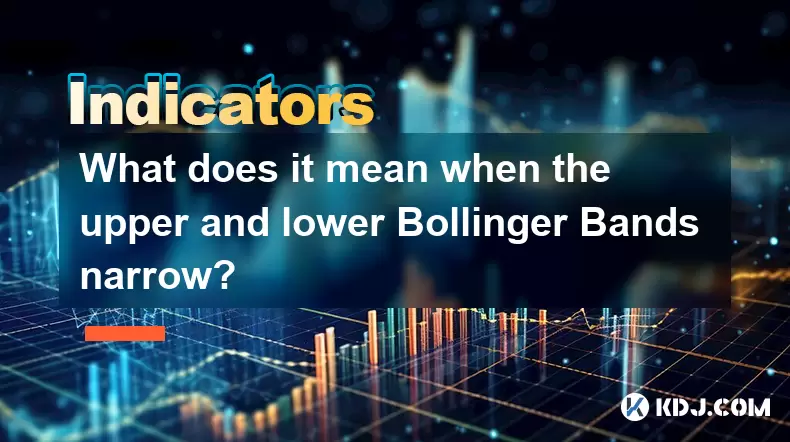
What does it mean when the upper and lower Bollinger Bands narrow?
Aug 09,2025 at 03:00pm
Understanding Bollinger Bands in Cryptocurrency TradingBollinger Bands are a widely used technical analysis tool in the cryptocurrency market, develop...
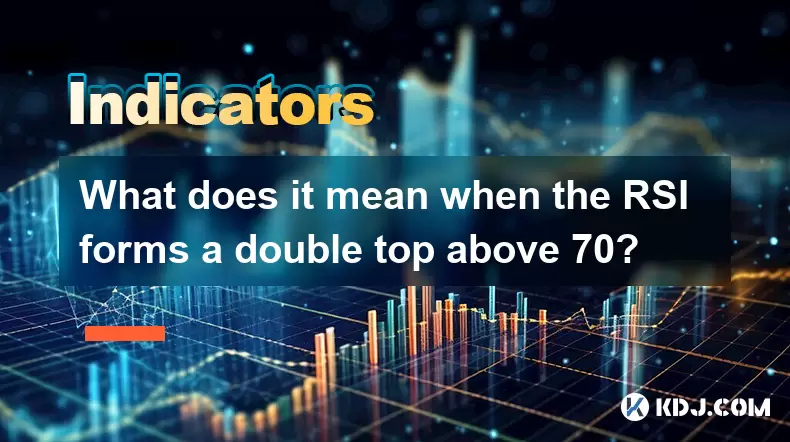
What does it mean when the RSI forms a double top above 70?
Aug 09,2025 at 05:50pm
Understanding the RSI and Overbought ConditionsThe Relative Strength Index (RSI) is a momentum oscillator that measures the speed and change of price ...
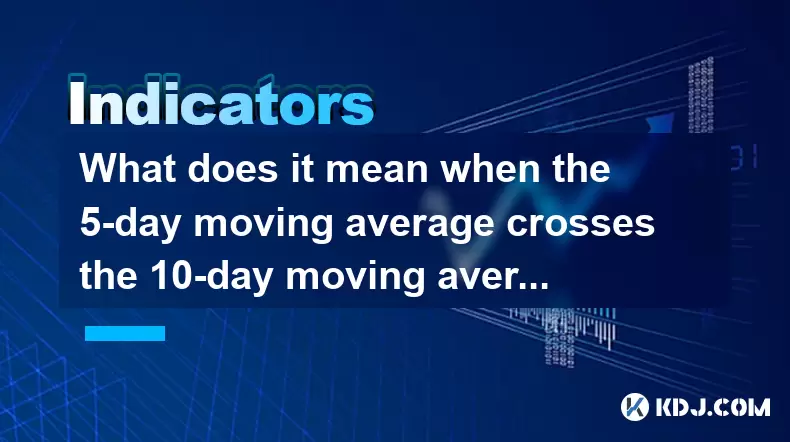
What does it mean when the 5-day moving average crosses the 10-day moving average but the 20-day moving average remains upward?
Aug 09,2025 at 03:35pm
Understanding Moving Averages in Cryptocurrency TradingMoving averages are foundational tools in technical analysis, especially within the cryptocurre...
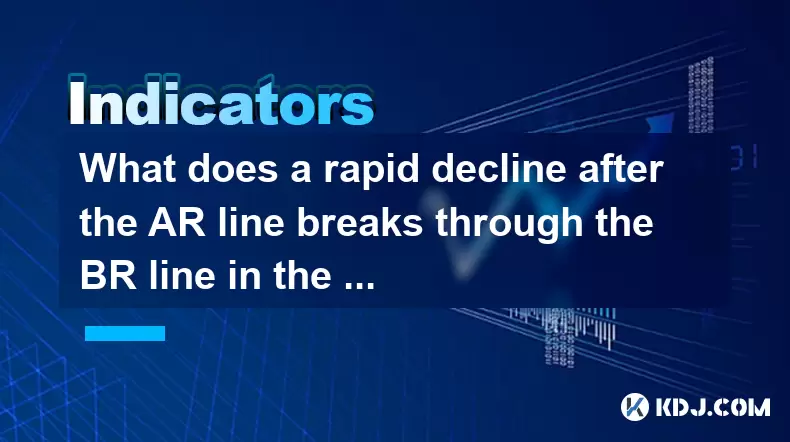
What does a rapid decline after the AR line breaks through the BR line in the ARBR indicator indicate?
Aug 09,2025 at 04:42pm
Understanding the ARBR Indicator ComponentsThe ARBR indicator is a technical analysis tool that combines two oscillators: the AR (Amplitude Ratio) and...

What does it mean when the Triple Moving Average (TRIX) turns downward but the price doesn't fall?
Aug 09,2025 at 12:42pm
Understanding the Triple Moving Average (TRIX) IndicatorThe Triple Moving Average, commonly known as TRIX, is a momentum oscillator designed to filter...

What does it mean when the Williams' oscillator repeatedly hits bottoms but fails to rebound?
Aug 09,2025 at 09:28am
Understanding the Williams %R OscillatorThe Williams %R oscillator, developed by Larry Williams, is a momentum indicator used in technical analysis to...

What does it mean when the upper and lower Bollinger Bands narrow?
Aug 09,2025 at 03:00pm
Understanding Bollinger Bands in Cryptocurrency TradingBollinger Bands are a widely used technical analysis tool in the cryptocurrency market, develop...

What does it mean when the RSI forms a double top above 70?
Aug 09,2025 at 05:50pm
Understanding the RSI and Overbought ConditionsThe Relative Strength Index (RSI) is a momentum oscillator that measures the speed and change of price ...

What does it mean when the 5-day moving average crosses the 10-day moving average but the 20-day moving average remains upward?
Aug 09,2025 at 03:35pm
Understanding Moving Averages in Cryptocurrency TradingMoving averages are foundational tools in technical analysis, especially within the cryptocurre...

What does a rapid decline after the AR line breaks through the BR line in the ARBR indicator indicate?
Aug 09,2025 at 04:42pm
Understanding the ARBR Indicator ComponentsThe ARBR indicator is a technical analysis tool that combines two oscillators: the AR (Amplitude Ratio) and...
See all articles

























































































